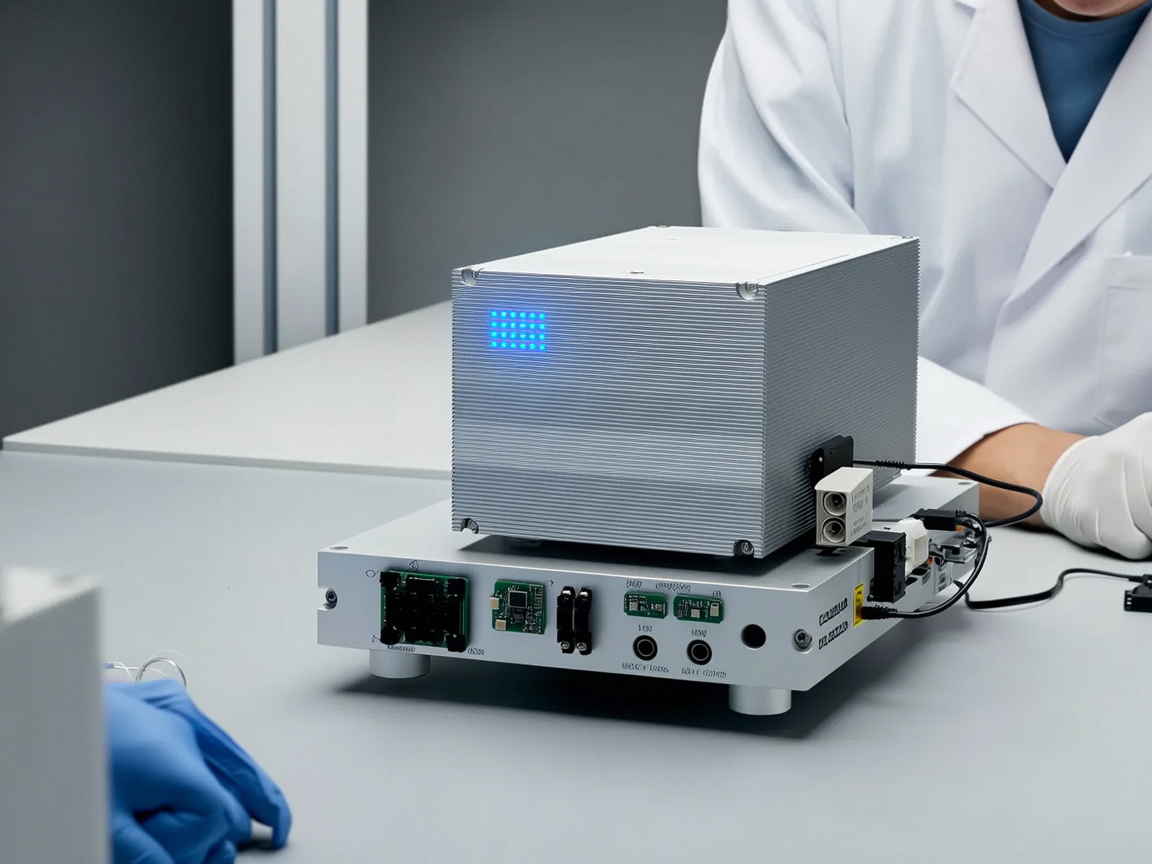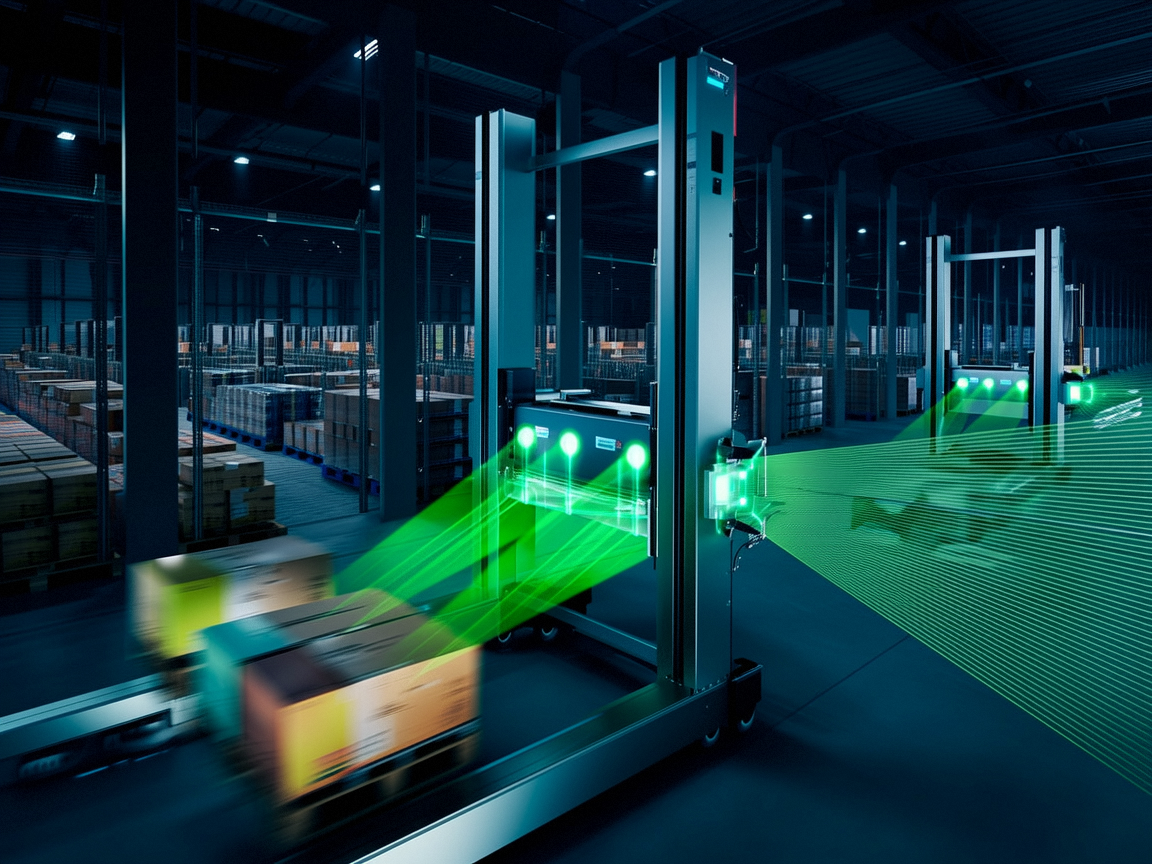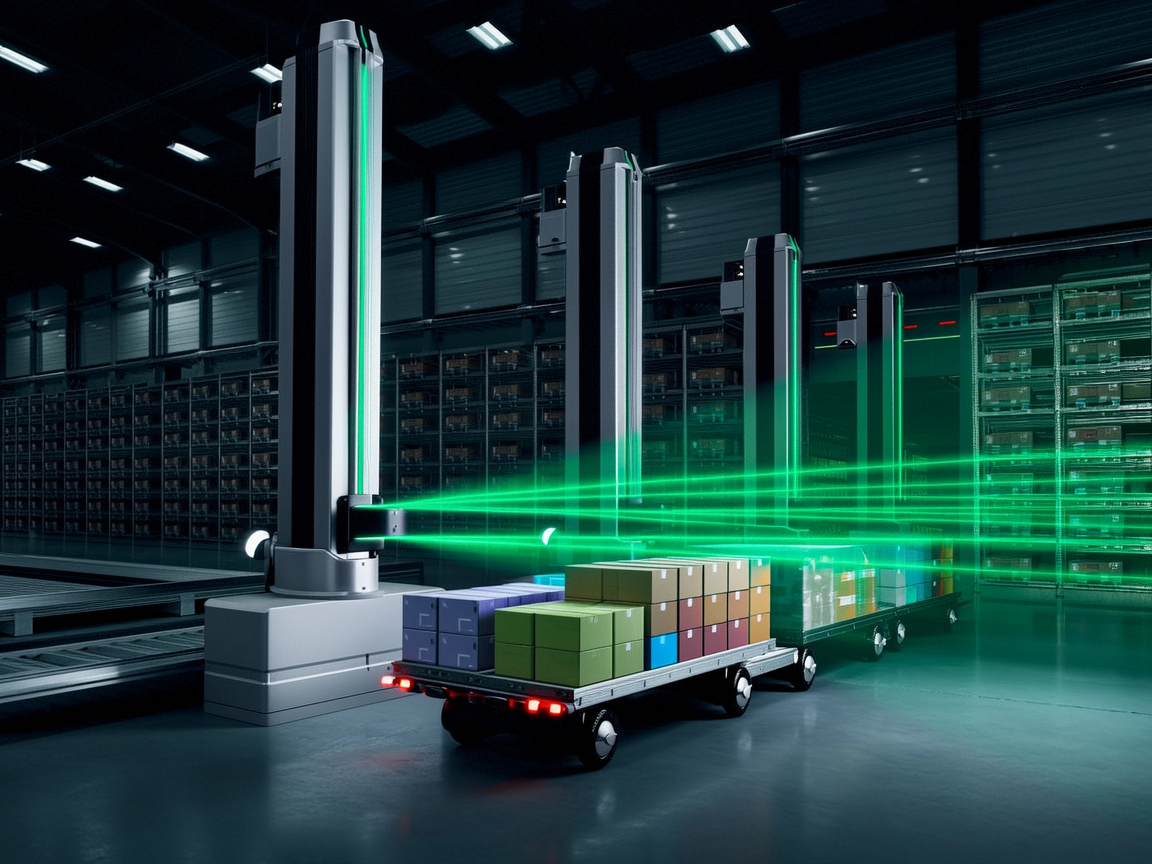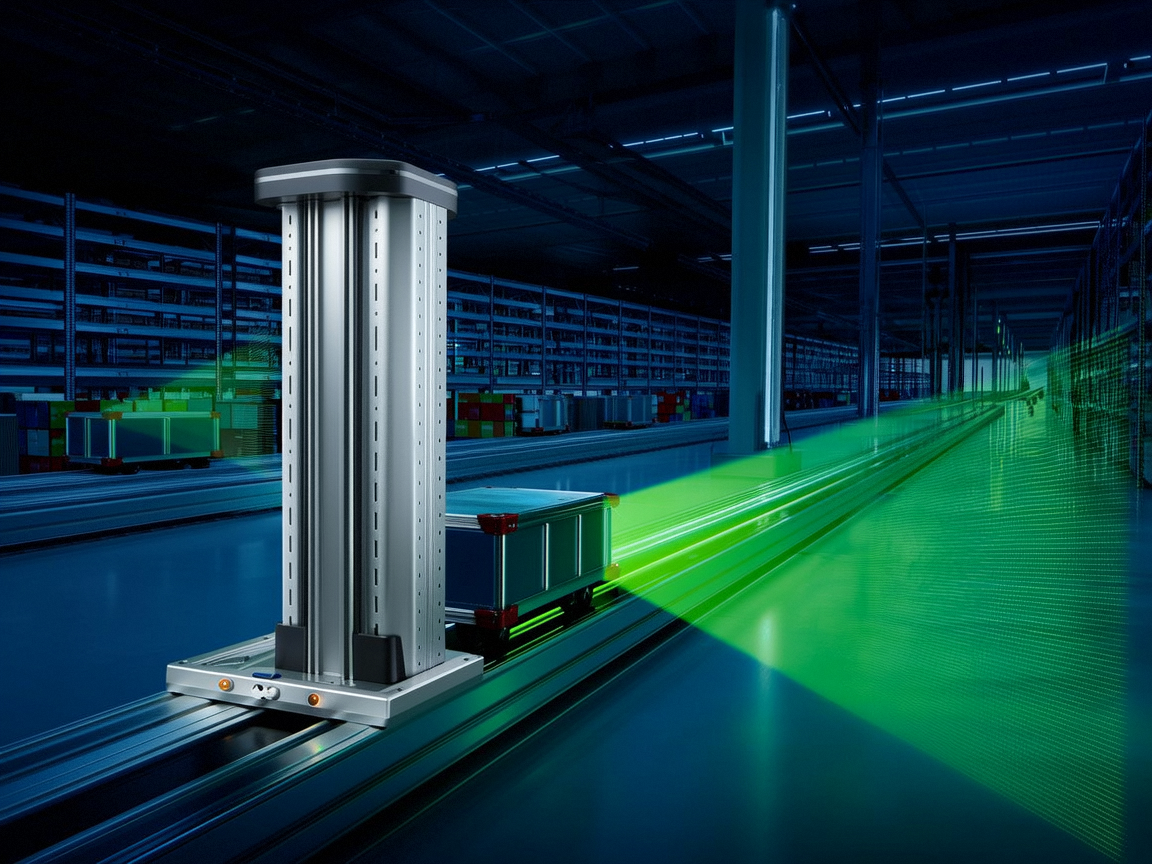
According to the classification of measurement methods, laser sensors can be divided into the following core types. The technical principles, applicable scenarios, and characteristics of different types vary significantly. The following is a detailed analysis:
1、 Contact and non-contact laser sensors
1. Non contact laser sensor (mainstream type)
Utilizing the optical properties of lasers to achieve long-distance measurement without physical contact with the target, avoiding damage to the object being measured, and suitable for dynamic, high-temperature, and vulnerable scenarios.
Typical applications: industrial component size detection, autonomous driving LiDAR, air pollutant monitoring, etc.
2. Contact laser sensor (rare)
Measurement is achieved through laser assisted mechanical probes (such as laser triggered probes), but fundamentally still relies on physical contact, and currently has limited applications, mainly used in special precision machining scenarios.
2、 Classification of measurement methods based on optical principles
1. Time of Flight (ToF) measurement type
Principle: Launch laser pulses, measure the time difference (Δ t) from the emission to the reflection back to the sensor, and calculate the distance (c is the speed of light) using the formula d=2c × Δ t.
characteristic:
Wide measurement range (from a few centimeters to several kilometers), such as vehicle mounted LiDAR that can reach over 200 meters;
The accuracy is affected by the time measurement accuracy, and the high-end ToF sensor has a time resolution of picoseconds (corresponding to a distance accuracy of ± 0.15mm);
Easy to be interfered by ambient light (such as sunlight), requiring the use of filters or pulse coding technology.
Applications: obstacle avoidance for robotic vacuum cleaners, terrain mapping, and volume measurement for logistics packages.
2. Triangular measurement type (optical triangulation)
Principle: The laser emitter irradiates the target at a fixed angle, and the reflected light is focused onto a photodetector (such as CCD/CMOS) through a lens. The distance is calculated by changing the position of the light spot (based on the principle of triangle similarity).
characteristic:
Short distance high precision (typical range 0.1mm~10m, accuracy ± 0.1 μ m~± 1mm);
The measurement range is inversely proportional to the accuracy (the closer the distance, the higher the accuracy);
Sensitive to the surface reflectivity of the object being tested (dark surfaces can easily lead to signal attenuation).
Applications: semiconductor wafer thickness detection, 3D printing layer thickness monitoring, mobile phone camera autofocus.
3. Interference measurement type (laser interferometry)
Principle: By utilizing the coherence of laser, the emitted light and reflected light are superimposed to produce interference fringes, and the displacement is calculated through the variation of the fringes (such as the principle of Michelson interferometer).
characteristic:
Nano level ultra-high precision (such as ± 0.1nm) is currently the highest precision laser measurement method;
The measurement range is usually small (several millimeters to tens of centimeters);
Sensitive to environmental vibrations and temperature changes, it needs to be used in a constant temperature and vibration isolation environment.
Applications: positioning of lithography machine worktable, straightness detection of precision mechanical guide rails, measurement of fiber fusion losses.
4. Diffraction measurement type (laser diffraction method)
Principle: When the laser is irradiated onto the edge or gap of the object being measured, diffraction phenomena are generated, and the size is calculated by analyzing the diffraction pattern (such as Fraunhofer diffraction fringes).
characteristic:
Non contact measurement, suitable for detecting small sizes (such as 0.1 μ m~1mm);
The accuracy can reach ± 0.1 μ m, suitable for measuring fine wires, slit widths, etc;
High requirements for the edge shape of the tested object (requiring regular geometric contours).
Application: Pin spacing detection of electronic components, measurement of textile fiber diameter, monitoring of blade edge wear.
5. Doppler effect measurement type (laser Doppler method)
Principle: When laser irradiates a moving object, the reflected light frequency shifts due to the Doppler effect (f d=λ 2vcos θ, v is velocity, θ is incident angle, λ is wavelength), and the velocity is calculated by the frequency difference.
characteristic:
Non contact measurement of dynamic speed, response time<1ms;
The accuracy can reach ± 0.1% (such as an error of ± 0.01m/s when measuring a speed of 10m/s);
The target object must have a certain degree of reflectivity and the direction of motion must be at an angle to the laser beam.
Applications: Traffic speed radar, industrial conveyor belt speed monitoring, blood flow velocity detection (in the medical field).
3、 Classification of measurement methods based on spectral analysis
1. Laser absorption spectroscopy measurement type (such as TDLAS)
Principle: By utilizing the characteristic of selective absorption of target gas molecules by a specific wavelength laser (such as the absorption peak of CO ₂ at 1572nm), the gas concentration is calculated using Lambert Beer's law (I=I0e − α CL, where α is the absorption coefficient, C is the concentration, and L is the optical path length).
characteristic:
High precision at ppm~ppb level, capable of detecting trace gases (such as CH ₄, NO ₂);
Fast response time (<1 second), suitable for real-time monitoring;
The corresponding wavelength laser (such as 1653nm for H ₂ O detection) needs to be selected according to the target gas.
Application: Environmental air quality monitoring, industrial waste gas emission detection, natural gas pipeline leak warning.
2. Laser induced fluorescence (LIF) measurement type
Principle: The substance being tested is irradiated with a laser to excite and emit fluorescence, and the composition or concentration of the substance is determined by analyzing the fluorescence spectral characteristics (such as wavelength and intensity).
characteristic:
High sensitivity (detection limit up to μ g/L), suitable for trace pollutant detection;
Can distinguish the fluorescence characteristics of different substances (such as distinguishing between petroleum and algae fluorescence);
Due to significant interference from background light, narrowband filters are required.
Application: Monitoring of oil pollution in water bodies, detection of biological fluorescent markers, rapid screening of pesticide residues in food.
4、 3D scanning and point cloud measurement type (LiDAR/LiDAR)
Principle: By emitting multiple laser beams (such as 16 line, 64 line, 128 line) and receiving reflected signals, a three-dimensional point cloud model of the target object is constructed, and the spatial coordinates (X, Y, Z) are calculated based on the scanning angle.
characteristic:
Real time generation of environmental 3D maps with angular resolution of 0.1 °~1 °;
The measurement range ranges from a few meters to several hundred meters (such as the typical range of 200 meters for vehicle mounted LiDAR);
Solid state LiDAR (such as MEMS, OPA) has no mechanical rotating parts and higher reliability.
Applications: Autonomous driving environment perception, smart city 3D modeling, forestry vegetation coverage monitoring, archaeological site terrain scanning.
5、 Composite measurement method (multi principle fusion)
Type: Combining "ToF+triangulation", balancing long-distance and high-precision (using triangulation for close range, switching ToF for long range); The integration of LiDAR and visual camera enhances the reliability of environmental perception.
Application: High end service robots (such as warehouse AGVs) avoid single sensor defects through composite measurement (such as misjudgment of LiDAR in front of glass walls, which can be compensated visually).
Summary and selection suggestions
Laser sensors with different measurement methods have their own advantages and disadvantages in accuracy, range, cost, and environmental adaptability. When selecting, priority should be given to clarifying the core requirements:
If long-distance dynamic measurement is required (such as autonomous driving), choose ToF LiDAR;
If nanometer level static accuracy is required (such as in semiconductor manufacturing), choose a laser interferometer;
If gas composition analysis is required, choose TDLAS or LIF sensors;
In complex environments, composite measurement methods can be considered to enhance reliability through multi principle fusion.
In addition, it is necessary to make comprehensive decisions based on the characteristics of the tested object (reflectivity, motion state), environmental interference (light, vibration, temperature), and cost budget.




















Contact us feel free to call or write anytime, We will call you back soon!